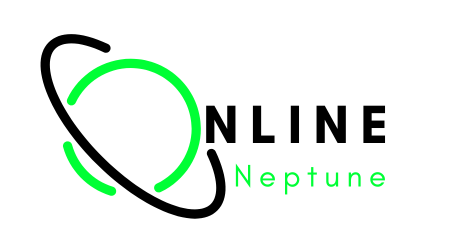In today’s digital landscape, cybersecurity threats lurk around every corner, posing a significant risk to businesses and individual users alike. One such threat is the WebCord Virus, a malicious software that can infiltrate systems and wreak havoc. Understanding the WebCord Virus is essential for anyone who relies on computers for personal or professional use. This comprehensive guide will explore the WebCord Virus, how it affects different operating systems, and most importantly, how you can protect your systems from infection. Whether you’re a business owner, IT professional, or general user, this article provides valuable insights into safeguarding your digital environment.
Understanding the WebCord Virus
What is the WebCord Virus?
The WebCord Virus is a type of malware designed to disrupt, damage, or gain unauthorized access to computer systems. It typically infiltrates systems through deceptive methods such as phishing emails, compromised websites, or malicious downloads. Once inside, the virus can execute various harmful actions, from stealing sensitive data to corrupting files. Understanding its infiltration methods is crucial for implementing effective security measures.
Aliases and Forms of the WebCord Virus
The WebCord Virus may appear under different names and forms, making it challenging to identify. It often disguises itself as legitimate software or uses aliases to bypass standard security protocols. These variations can include trojans, ransomware, or spyware, each with unique traits but sharing a common goal of exploiting system vulnerabilities. Recognizing these forms can aid in early detection and prevention.
Impact on Different Operating Systems
The WebCord Virus doesn’t discriminate and can affect multiple operating systems, including Windows, macOS, and Linux. Each system has its security strengths and weaknesses, and the virus exploits these to spread and inflict damage. For instance, while Windows is often targeted due to its widespread use, macOS users shouldn’t consider themselves immune. The cross-platform nature of the WebCord Virus necessitates understanding its behavior on different systems to ensure comprehensive protection.
Protecting Against the WebCord Virus
Best Practices for Prevention
Prevention is the first line of defense against the WebCord Virus. Adopting secure browsing habits, such as avoiding suspicious links and regularly clearing browser caches, can significantly reduce the risk of infection. Additionally, keeping all software up to date ensures vulnerabilities are patched promptly, preventing the virus from exploiting outdated security protocols. Regularly backing up important data also minimizes the impact of potential breaches.
Role of Cybersecurity Software
Reliable cybersecurity software is invaluable in protecting against the WebCord Virus. Modern antivirus programs offer real-time scanning, threat detection, and automatic updates to shield your system from emerging threats. Investing in a reputable security suite can provide peace of mind, knowing your devices are continuously monitored and protected against malicious activities.
Detecting the Virus Early
Early detection of the WebCord Virus can prevent further damage and allow for swift action. Regular system scans using advanced antivirus tools can identify and quarantine suspicious files before they cause harm. Monitoring system performance and network activity for unusual patterns is also essential, as these can be indicators of a lurking virus. Timely intervention can mitigate potential risks and safeguard your valuable data.
Removing the WebCord Virus
Step-by-Step Removal Guide
If your system is infected with the WebCord Virus, immediate removal is critical. Begin by disconnecting from the internet to prevent further spread. Run a full system scan using updated antivirus software to identify and remove malicious files. Follow the software’s instructions to quarantine or delete the virus. In severe cases, a professional IT service may be required to ensure complete eradication.
Thorough Scanning and Cleaning
After initial removal, conducting thorough scans is vital to ensure no remnants of the WebCord Virus remain. Use specialized malware removal tools to perform deep system cleaning, examining all files and directories. This comprehensive approach prevents reinfection and restores system integrity, allowing you to resume normal operations with confidence.
Post-Removal Measures
Once the WebCord Virus is removed, implementing post-removal measures is crucial to prevent future infections. Strengthen system security by updating passwords, enabling multi-factor authentication, and enhancing firewall settings. Regularly educate yourself and your team on cybersecurity best practices to maintain vigilance and prevent falling victim to similar threats in the future.
Staying Vigilant: The Future of WebCord Virus Defense
Evolving Nature of Cyber Threats
The WebCord Virus, like many cyber threats, continues to evolve, adapting to bypass security measures. Staying ahead requires continuous education and adapting to new defense strategies. Understanding emerging trends and potential future threats is essential for maintaining robust protection against evolving viruses.
Importance of Continuous Education
Educating yourself and your team about cybersecurity threats is a proactive approach to defense. Regular workshops, webinars, and training sessions can keep everyone informed about the latest threats and prevention techniques. A well-informed team is better equipped to recognize and respond to potential risks effectively.
Resources for Staying Informed
Numerous resources are available for staying informed about cybersecurity threats and best practices. Websites like the Cybersecurity & Infrastructure Security Agency (CISA) provide valuable updates and insights. Subscribing to industry newsletters and following reputable cybersecurity blogs can also keep you informed about the latest developments, ensuring you stay one step ahead of potential threats.
You May Also Like: How Oprekladač Transforms Global Communication
Conclusion
The WebCord Virus poses a significant threat to computer systems, but with the right knowledge and proactive measures, you can protect your digital environment. By understanding the virus, implementing preventive practices, and staying informed about evolving threats, you can safeguard your systems and data effectively. Whether you’re a business owner, IT professional, or general user, taking these steps ensures your digital operations remain secure and resilient in the face of cyber threats.
Frequently Asked Questions
What is the WebCord Virus?
The WebCord Virus is a type of malware that infiltrates computer systems to steal data or cause damage. It spreads through deceptive methods like phishing emails and malicious downloads.
How can I prevent the WebCord Virus?
Prevent the WebCord Virus by adopting secure browsing habits, keeping software updated, and using reliable cybersecurity software to detect and block potential threats.
Can the WebCord Virus affect all operating systems?
Yes, the WebCord Virus can affect multiple operating systems, including Windows, macOS, and Linux. Each system has vulnerabilities that the virus can exploit.
What should I do if my system is infected?
If infected, disconnect from the internet, run a full system scan with antivirus software, and follow removal instructions. Consider professional help for complete eradication.
How can I stay informed about new cyber threats?
Stay informed about cyber threats by subscribing to industry newsletters, following cybersecurity blogs, and utilizing resources from organizations like the Cybersecurity & Infrastructure Security Agency (CISA).











